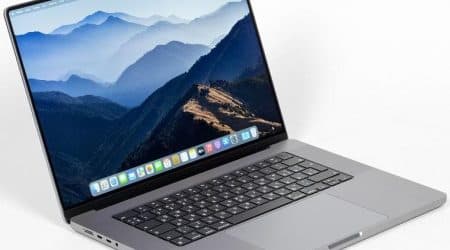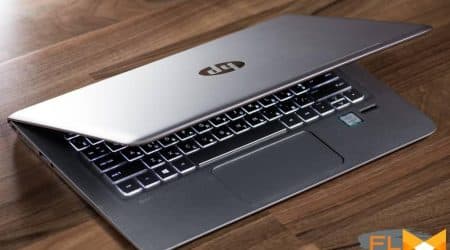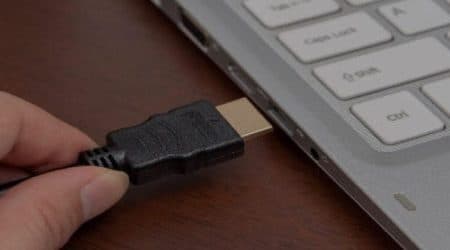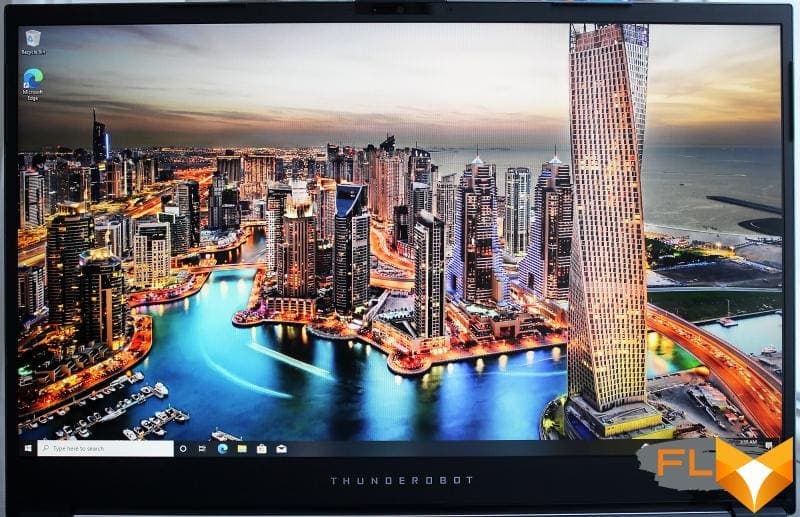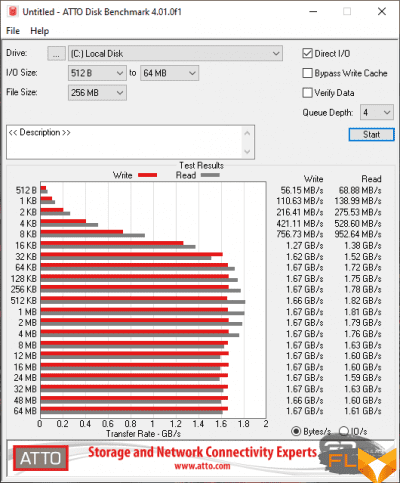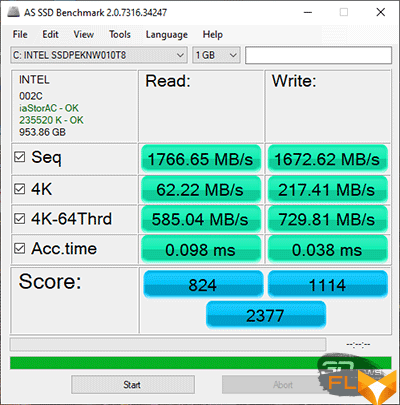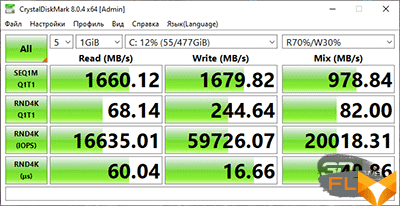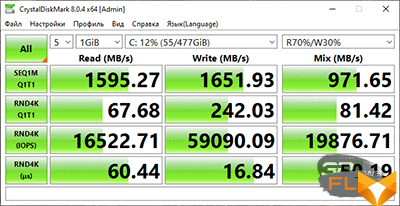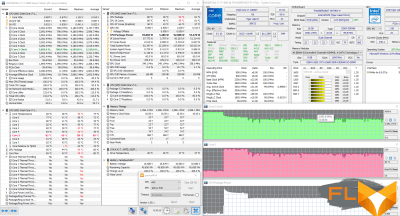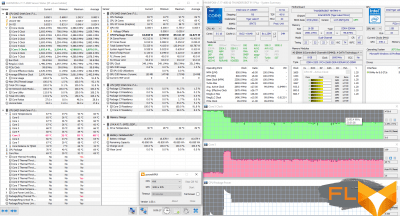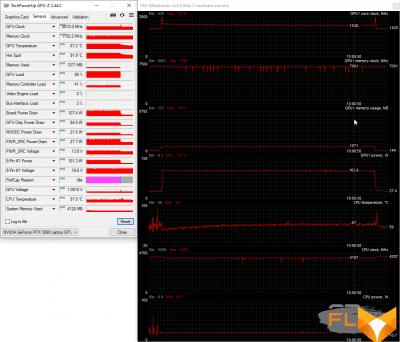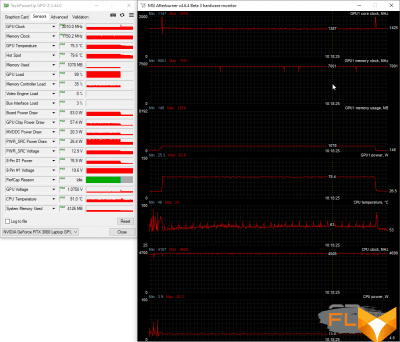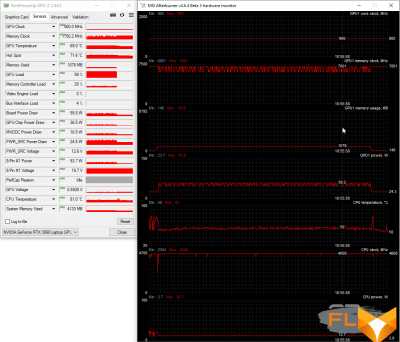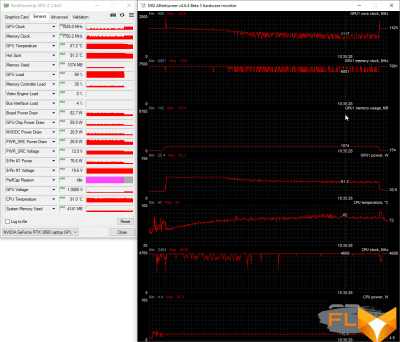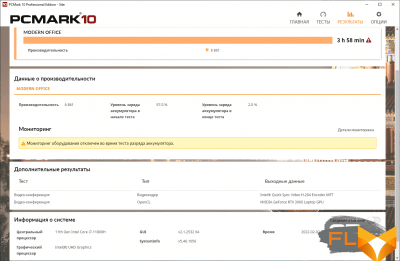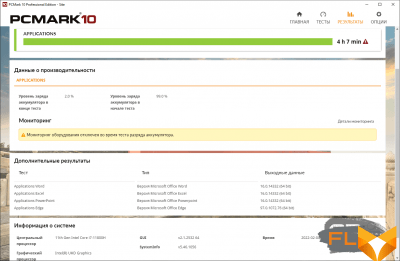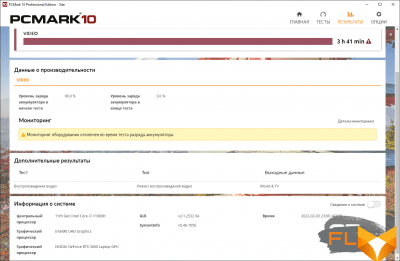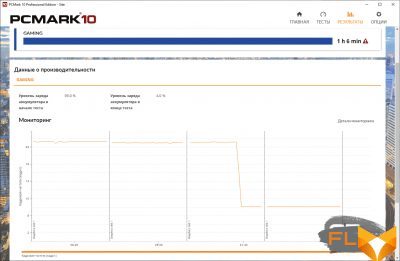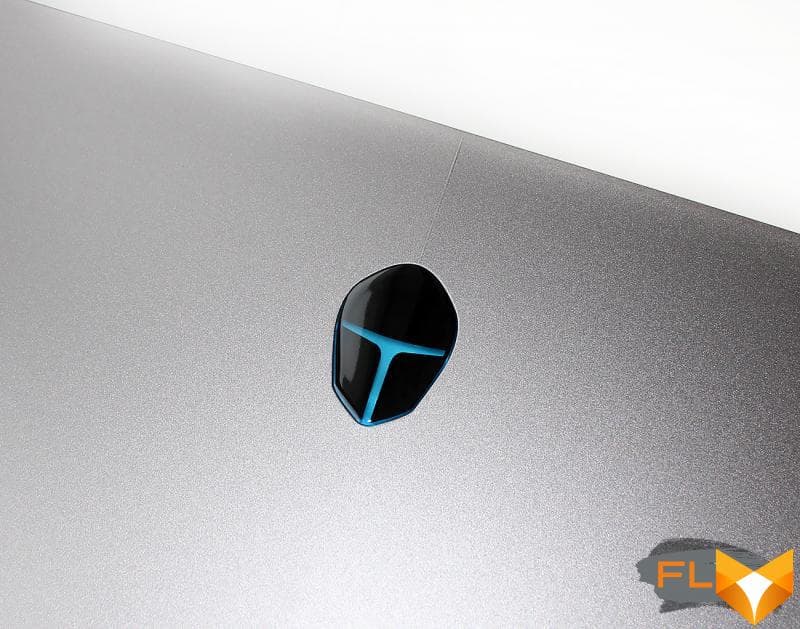


Last December, we introduced you to the Thunderobot Zero gaming laptop, which can be ordered on AliExpress, and today we will meet another guest from the same marketplace. This time we will focus on a cheaper model, but also related to laptops for gamers – Thunderobot 911 Plus. The laptop received this status thanks to a 17-inch screen with a refresh rate of 144 Hz and a productive hardware bundle of an eight-core Intel Core i7-11800H processor and an NVIDIA GeForce RTX 3060 Laptop GPU. In addition, the laptop is equipped with a one terabyte SSD drive, sixteen gigabytes of DDR4 RAM and other useful features for gamers.
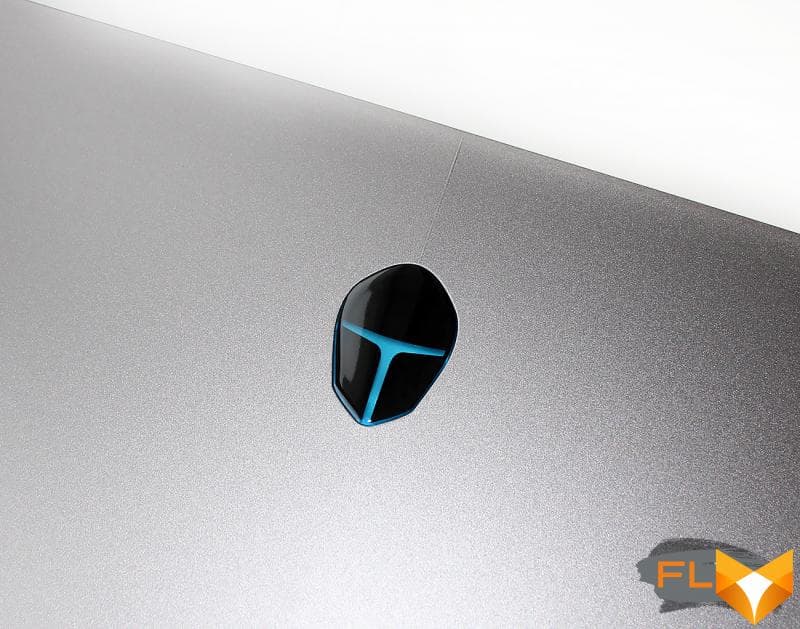
⇡#Box and accessories
Thunderobot 911 Plus came to us sealed in two boxes. The first is made of ordinary cardboard and has only a couple of informational stickers, and inside it there is already a colored box made of glossy cardboard with a plastic handle.
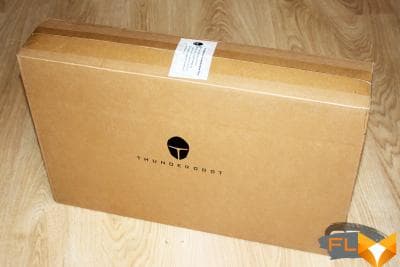 | 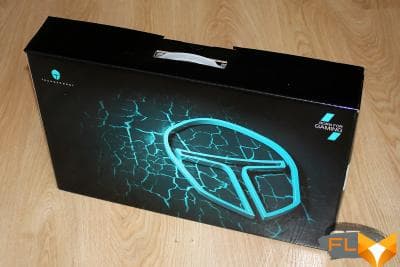 |
Inside the last box, the laptop is fixed between two polyethylene foam inserts and additionally sealed in a bag. In general, the packaging is reliable and ready to withstand various “features” of Russian delivery.
The laptop package includes a power adapter with two power cables (with Russian and European plugs), stickers with a Russian layout for the keyboard, instructions, as well as screws for securing controllers and drives in M.2 ports.
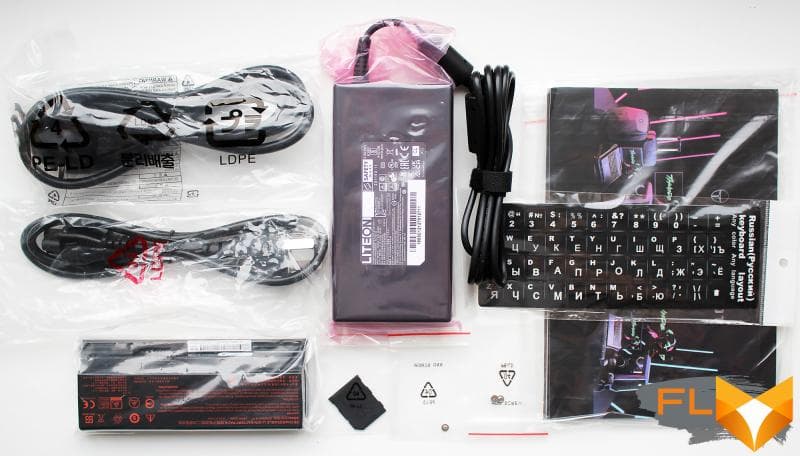
The battery is also sealed in a separate bag and in our case was completely discharged.
Thunderobot 911 Plus is manufactured in China and comes with a two-year warranty. The cost of the laptop configuration provided for testing with an Intel Core i7-11800H processor, 16 GB of RAM and a 1 TB SSD at the time of testing was $1,700. If you choose a model with a six-core Intel Core i5-11260H processor and a 512 GB SSD, then the price will be reduced by $ 300. The video card in all configurations will be the same – NVIDIA GeForce RTX 3060 Laptop GPU, like everything else.
⇡#Specifications
| Thunderobot 911 Plus | ||
| CPU | Intel Core i7-11800H (Tiger Lake, 10nm SuperFin, 8 cores/16 threads, 2.3-4.6GHz, 24MB L3 cache, 45W max TDP) | |
| Chipset | Intel Tiger Lake-H + Intel HM570 | |
| RAM | 16 (8×2) GB DDR4 3.2GHz (ADATA AM1P32NC8T1-BDRS), timings 22-22-22-52 CR1 | |
| Accumulator | SSD 1TB M.2 2280 NVMe PCIe 3.0 x4 (Intel SSDPEKNW010T8) | |
| Video Subsystem | NVIDIA GeForce RTX 3060 Laptop GPU 6GB (up to 105W, 1425/14000MHz); Processor-integrated Intel UHD graphics (32 UEs, 1.45 GHz) | |
| Display | 17.3″ 1920×1080 pixel IPS screen, 144Hz or 60Hz, 300nits maximum brightness, 800:1 contrast ratio; color space coverage 100% sRGB | |
| Sound subsystem | Realtek ALC256 codec, 2 stereo speakers; Nahimic sound support | |
| Cart Reader | Yes, SD | |
| Network interfaces | Cable network | Intel Ethernet Connection I219-V, 1000 Mbps |
| Wi-Fi | Intel Wi-Fi 6 AX201NGW (802.11ax, MIMO 2×2, 2.4GHz and 5GHz, 160MHz) | |
| Bluetooth | Bluetooth 5.1 | |
| Interfaces and Ports | USB | 1 × USB 3.2 Gen2 (Type-C Thunderbolt 4 with DisplayPort 1.3 support) 2 × USB 3.1 Gen1 (Type-A) 1 x USB 2.0 |
| Video outputs | HDMI 2.0 and MiniDP 1.3 | |
| Audio connectors | 2 for headphones and microphone | |
| Input Devices | Keyboard | Membrane with number pad and customizable RGB lighting (16.8 million colors) |
| Touchpad | Two-button, dimensions 110 × 63 mm | |
| VoIP | Webcam | 0.9 MP, 720p@30 FPS built into the top bezel |
| Microphone | Dual microphone | |
| Battery | Li-Ion NH50BAT-4-47, 47 Wh (3000 mAh) | |
| Power adapter | Lite-On, max. power 180 W (19.5 V, 9.23 A), weight 492 g, built-in cable 1.78 m long, power cable 1.34 m long and weighing 131 g | |
| Dimensions | 396 x 269 x 27mm (rear thickness 36mm) | |
| Weight without power adapter: declared/measured | ≥2000 / 2463g | |
| Body Colors | Silver | |
| Operating system | Windows 10 Pro | |
| Warranty (years) / country of manufacture | 2 / China | |
| Cost on AliExpress, $ | 1700 | |
⇡#Hull design and ergonomics
Externally Thunderobot 911 Plus looks like a normal laptop without any frills and unique design solutions. However, the latter include graceful turquoise backlit stripes on the screen lid and an illuminated logo that make the laptop’s silver case a bit more interesting.
 |  |
The working panel of the Thunderobot 911 Plus and the screen roof are made of metal, while the base of the Thunderobot 911 Plus is plastic. The metal panels are completely non-marking, there are no fingerprints left on them.
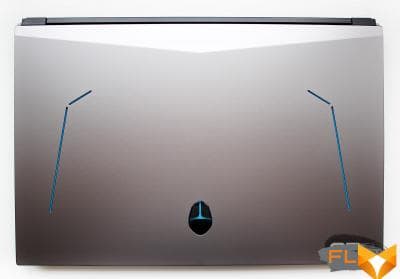 | 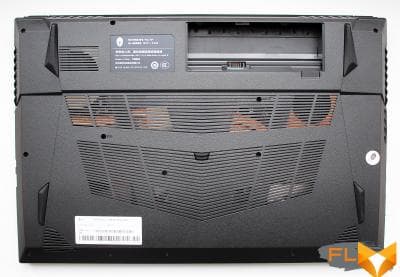 |
For a seventeen-inch model, the dimensions of the laptop can be called standard – 396 × 269 × 27 mm (thickness at the back – 36 mm), and the weight is 2.46 kilograms.
Rubber feet are glued to the base of the laptop case, lifting the case by 3-3.5 mm from the surface.

The front and sides of the Thunderobot 911 Plus are tapered, making the laptop visually thinner.

Here you can see a recess that allows you to hook the lid when you open it with your fingers, but you won’t be able to open it with one hand – the hinges are very tight. There are also indicators of drive activity, network connection and charge.
The ventilation grilles of the laptop are displayed on its sides and back.

 |  |
All the ports that Thunderobot 911 Plus is equipped with are located on the same faces.
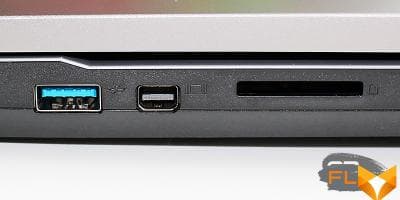 | 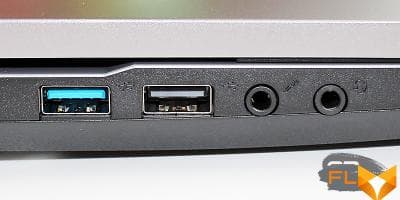 |

These include two USB 3.1 Gen1 Type-A ports, one Thunderbolt 4 USB 3.2 Gen2 Type-C port with DisplayPort 1.3 support, one USB 2.0 port, Mini DP 1.4 video output and SD card reader, 8P8C network jack, two audio jacks and power socket.
The screen opening angle is 130 degrees.
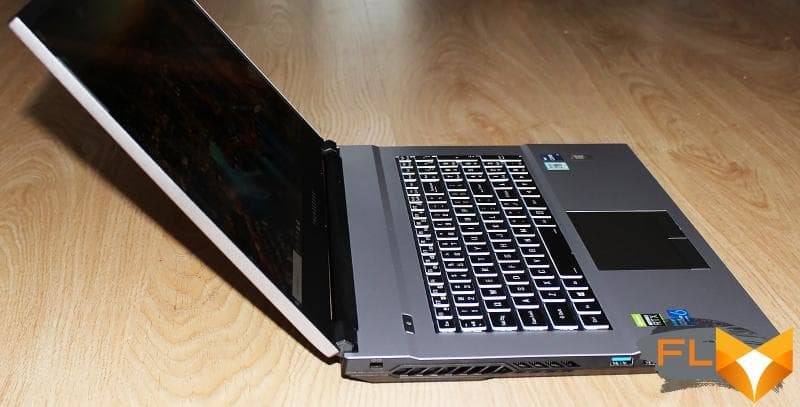
There are no questions about the assembly of the Thunderobot 911 Plus case and the quality of the materials used: according to these parameters, the laptop is in no way inferior to the products of famous brands.
⇡#Input Devices
The keyboard of the Thunderobot 911 Plus is membrane type, with a block of numeric keys. The keyboard has only an English layout, but it is printed in a well-readable white font. The key travel is only 1.4 mm, and the operation is very quiet.
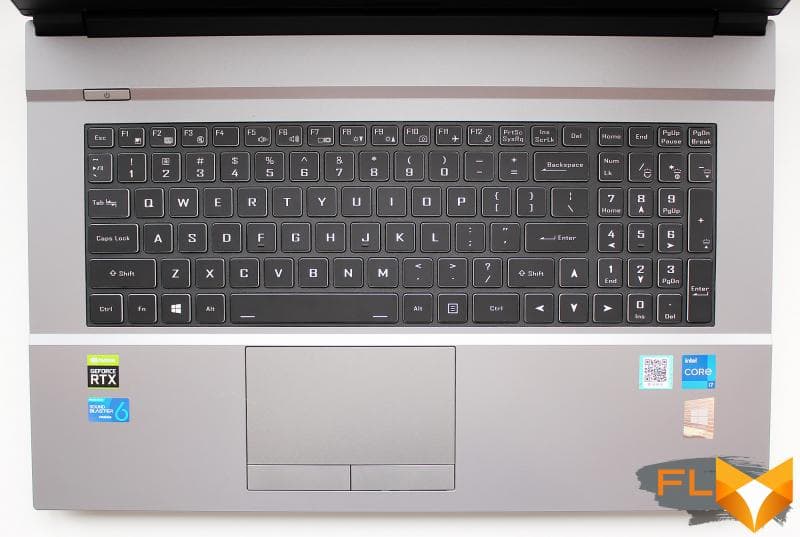
The key surface here is flat, not concave like the Zero laptop. At the same time, the dimensions of the main keys are slightly smaller and amount to 14 × 14 mm, and the functional keys are 12.5 × 9 mm. The Shift and Enter keys are tripled in length, making them comfortable to work with.
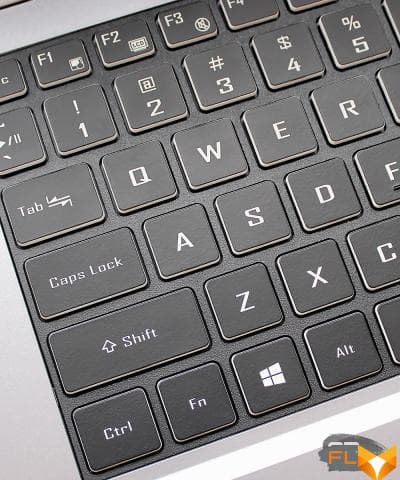 |  |
If we compare Thunderobot 911 Plus with Zero, then the positive point is the preservation of the normal size of the “arrows”, while in the previous Thunderobot they were twice ysame.
A dedicated FlexiKey section in the Control Center software is responsible for recording keyboard macros.
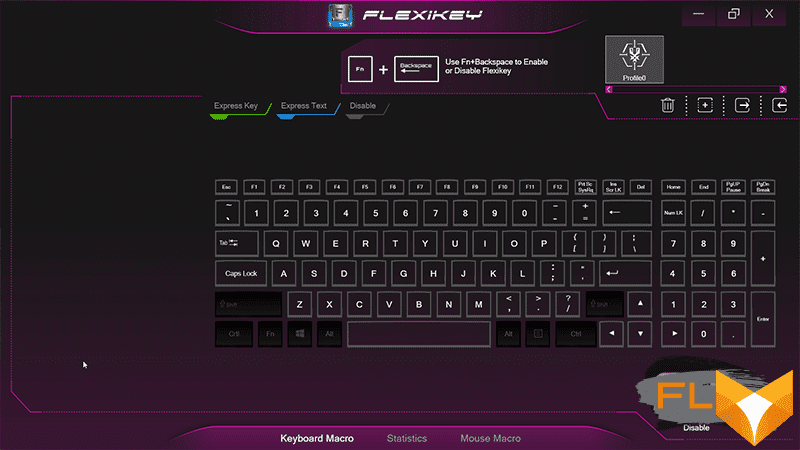
In addition, the keyboard is equipped with adjustable backlighting, but not zonal, like Zero, but single-fragment. There are four levels of brightness and a choice of backlight colors from a sixteen-color range.
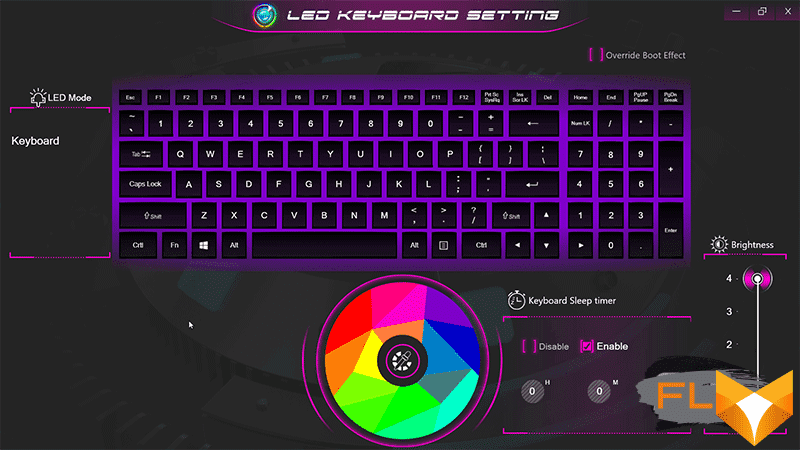
Here are examples of keyboard backlighting at maximum brightness.
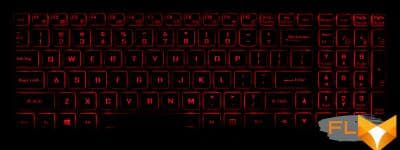 | 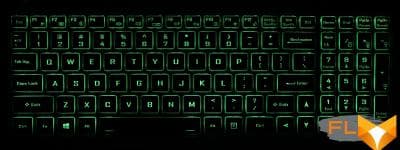 |
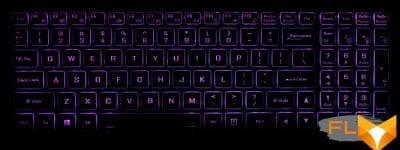 | 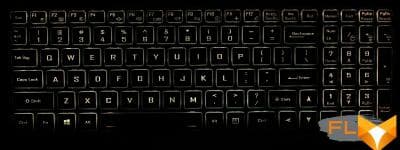 |
Only in the space zone you can see an unlit spot, and the rest of the area of the keys is evenly backlit. If you do not type on the keyboard for 30 seconds, the backlight will automatically turn off (this is also configured in the Control Center).
But the touchpad here is not very successful. Firstly, it is small – only 110 × 63 mm in size, and secondly, it is not sensitive enough to pressure on its surface.
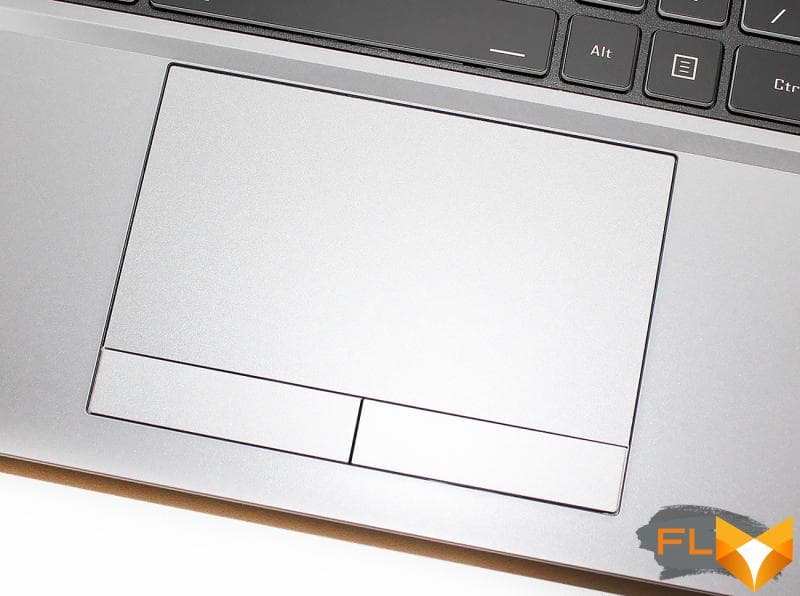
Yes, and individual buttons look somehow antique, or something, because in most modern touchpads they are hidden under its surface.
Thunderobot 911 Plus also has a webcam built into the top bezel of the display.
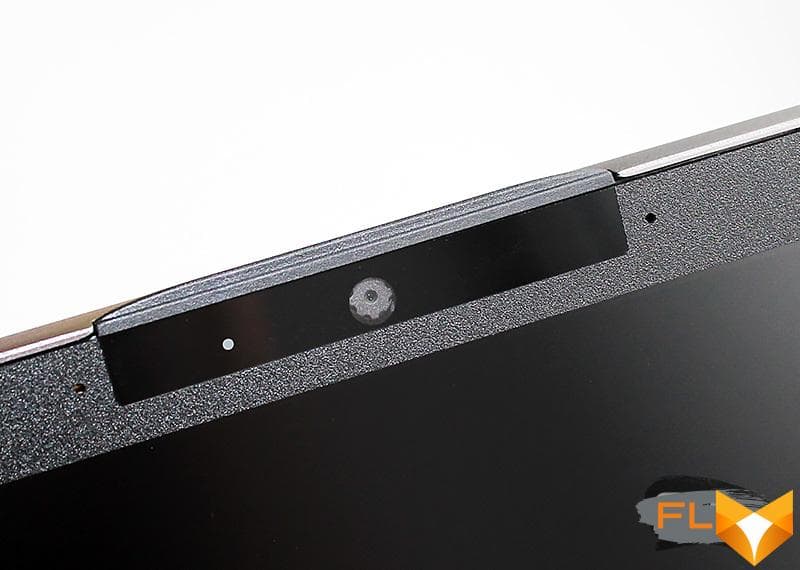
It displays an image with a resolution of 720p (30 FPS) and is equipped with a pair of microphones.
The laptop power button is located in the upper left corner of the work panel.

A backlight LED is built into the button, but it is very bright and cannot be adjusted in any way. In the dark, this LED delivers some discomfort when typing at the keyboard. We add that there is no fingerprint scanner in the laptop.
⇡#Display
The screen diagonal in Thunderobot 911 Plus is 17.3 inches. The width of the side frames is 5.5 mm, the top one is 11 mm, and the bottom one is 22 mm.
Thunderobot Zero laptop screen photo
The matrix type is IPS, the surface is matte, the resolution is 1920 × 1080 pixels, the refresh rate is 144 Hz, and the declared contrast ratio is 800:1.
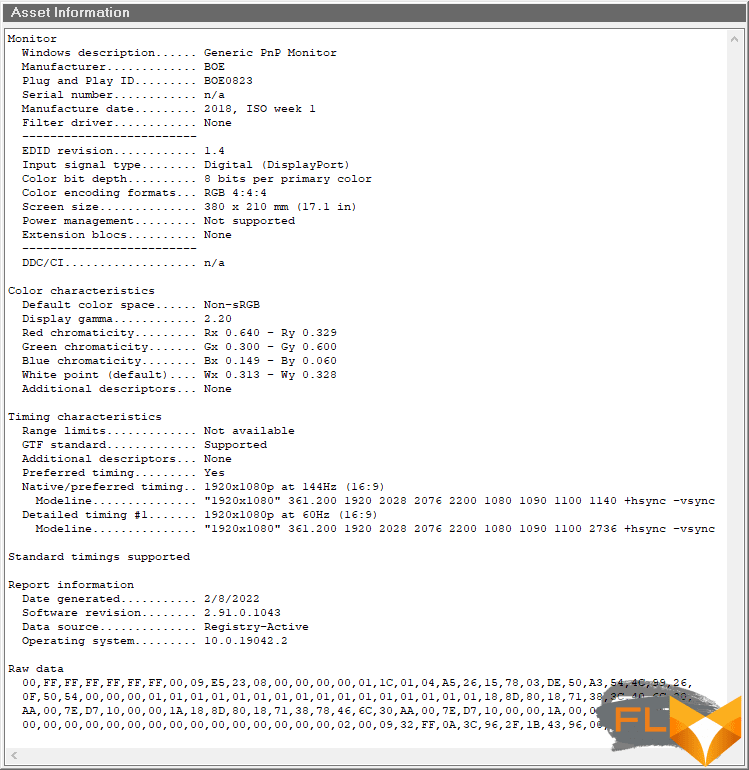
In addition to the above, 100% sRGB color space coverage is declared.

We tested the display of Thunderobot 911 Plus laptop with X-Rite i1 Display Pro calibrator and Argyll CMS software with DispcalGUI GUI. All measurements were taken without additional display calibration. Let’s look at the results.
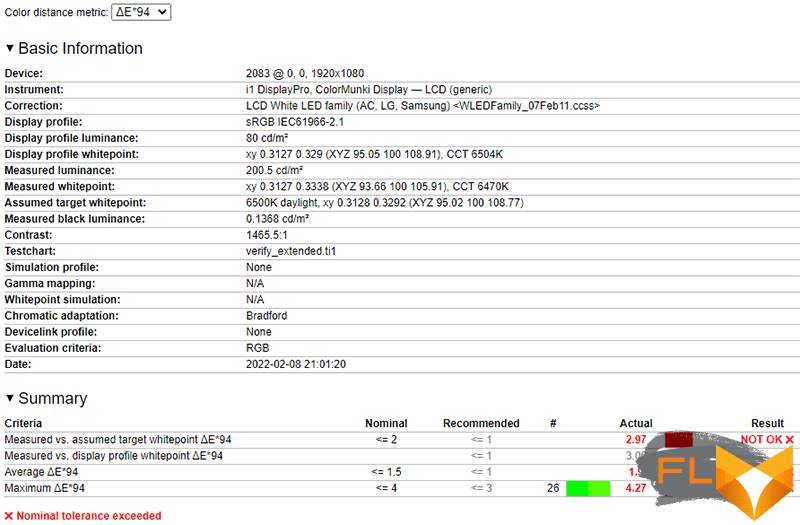
The measured characteristics of the display slightly exceeded the permissible deviations (we easily corrected them later by calibration), but the contrast ratio, instead of the 800:1 declared in the characteristics, was almost 1500:1.

The color temperature turned out to be almost standard, passing close to the border of 6500 K.
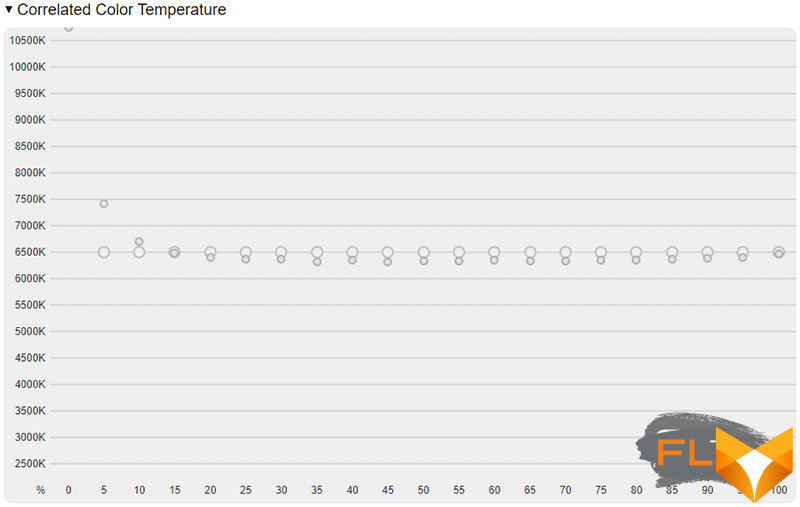
The gamma curve is worse, but not critical at all.
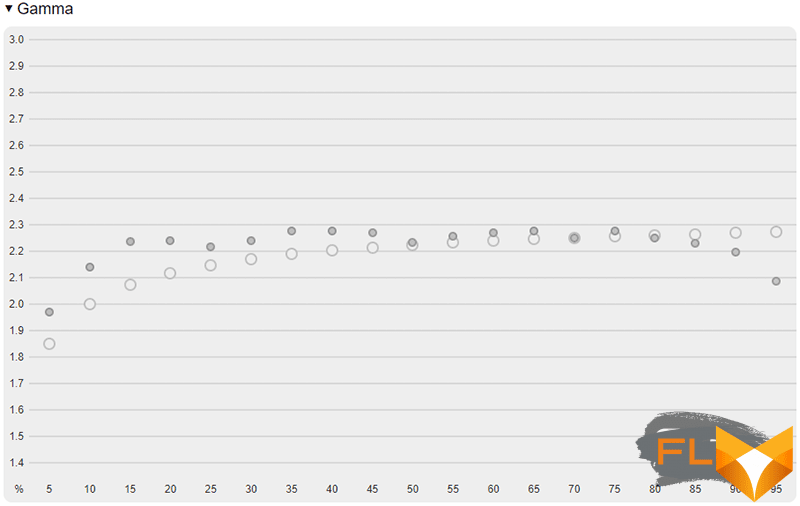
The color balance in the gray gradient is almost flawless.
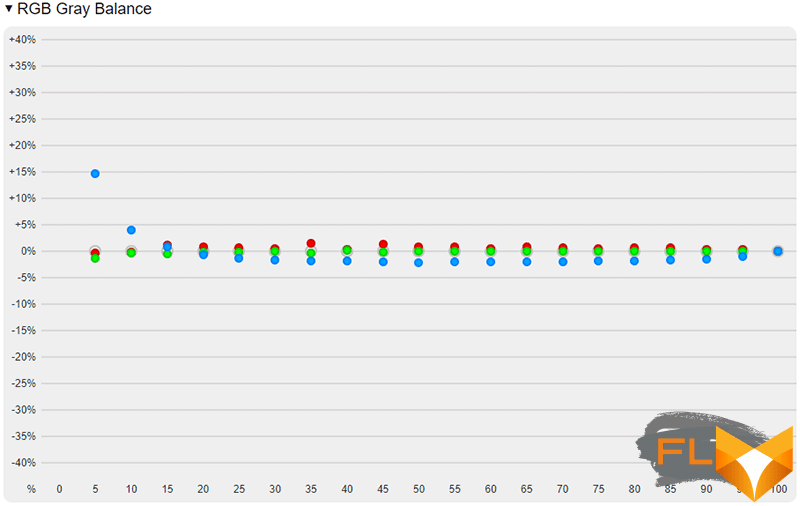
After calibrating the display (profile attached), the average DeltaE deviation was only six hundredths of a unit, and the color space coverage fell slightly short of 100% sRGB.
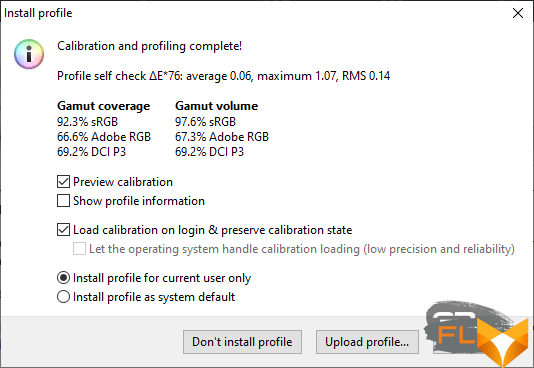
The maximum brightness of the Thunderobot 911 Plus screen is noticeably lower than in the Zero model, and is 253 nits, against 414 nits for the older “brother”.
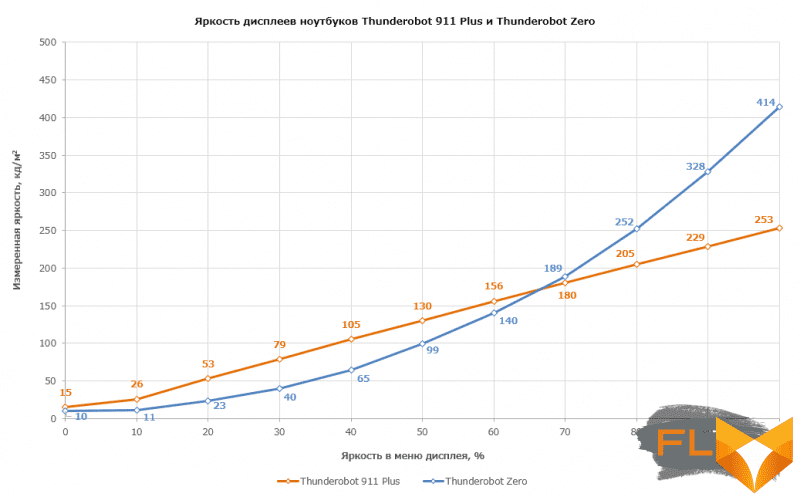
It is unlikely that this value will be enough for comfortable work or gaming on a laptop on a sunny day.
But it is difficult to make any serious claims to the uniformity of the matrix illumination.
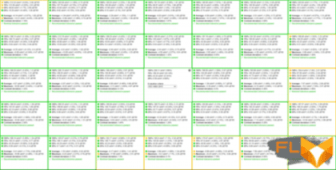
Internal Devices and Accessories
The internal layout of the Thunderobot 911 Plus is quite loose. At first glance, there is not even a seat for the battery right away, it is so tiny.
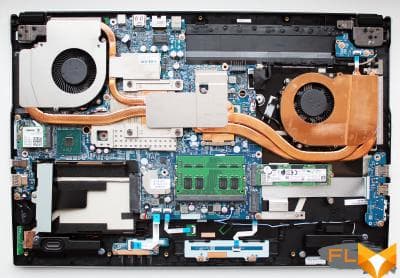 | 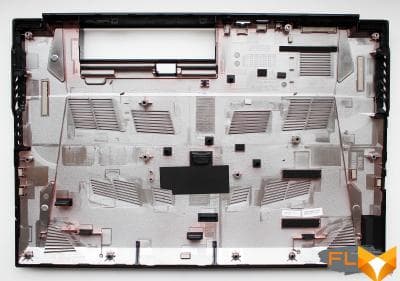 |
However, it cannot be said that the internal volume was squandered by developers in vain. On the contrary, it is used very competently, and this also applies to the cooling system, which we will consider below, in the corresponding section of the article.
Like the Thunderobot Zero model, the hardware configuration of the 911 Plus is based on the motherboard based on the Intel Tiger Lake-H chipset (Intel HM570).
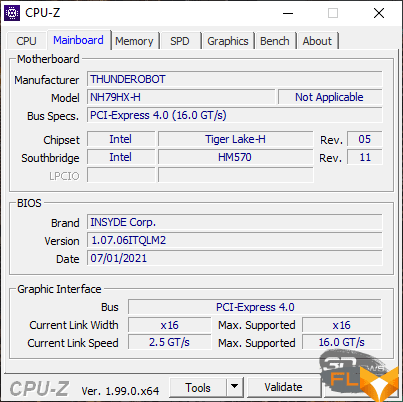
Interestingly, the chipset crystal is not cooled at all here (owners of ASUS motherboards based on the Intel Z690 understand me now).
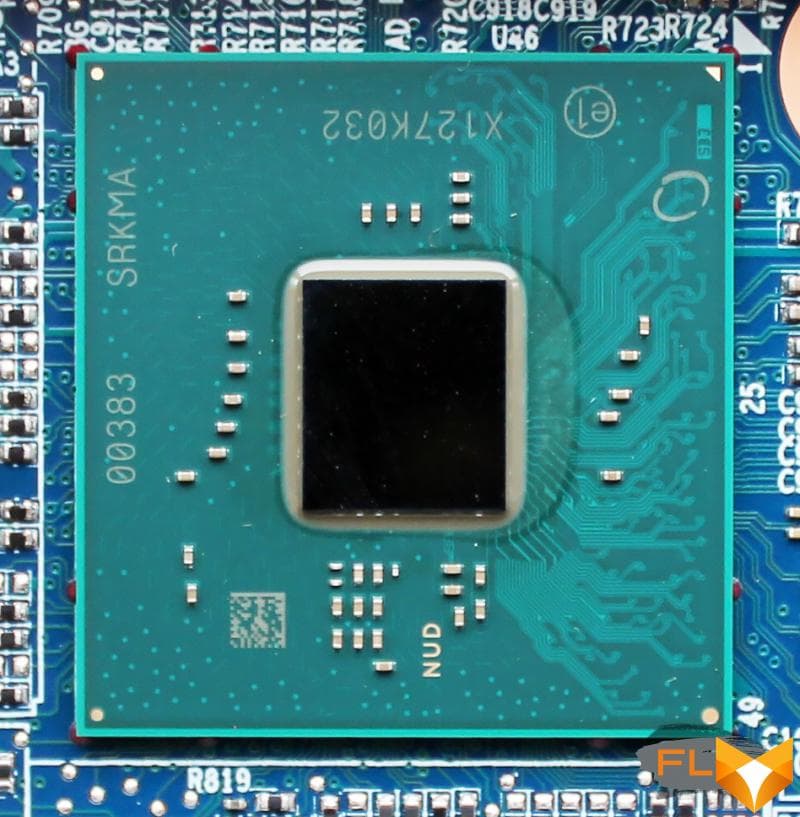
The BIOS version with the original name 1.07.06ITQLM2 is dated July 1, 2021. A more recent firmware version was not found at the time of preparation of the article.
The Thunderobot 911 Plus can be powered by a 10nm hexa-core Intel Core i5-11260H or an octa-core Intel Core i7-11800H. Our version just uses the latter option.
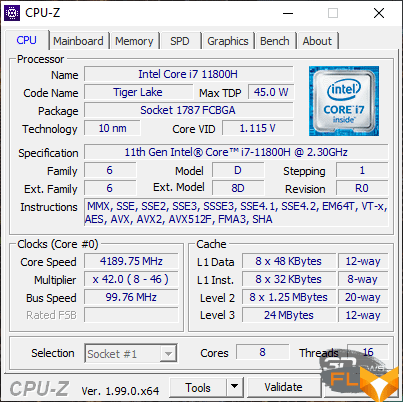
It is capable of reaching a turbo frequency of 4.6 GHz, and it also has a 24 MB L3 cache. Perhaps this is one of the fastest mobile CPUs, the performance of which can even be called excessive for a discrete graphics card, with which it is adjacent to this laptop.
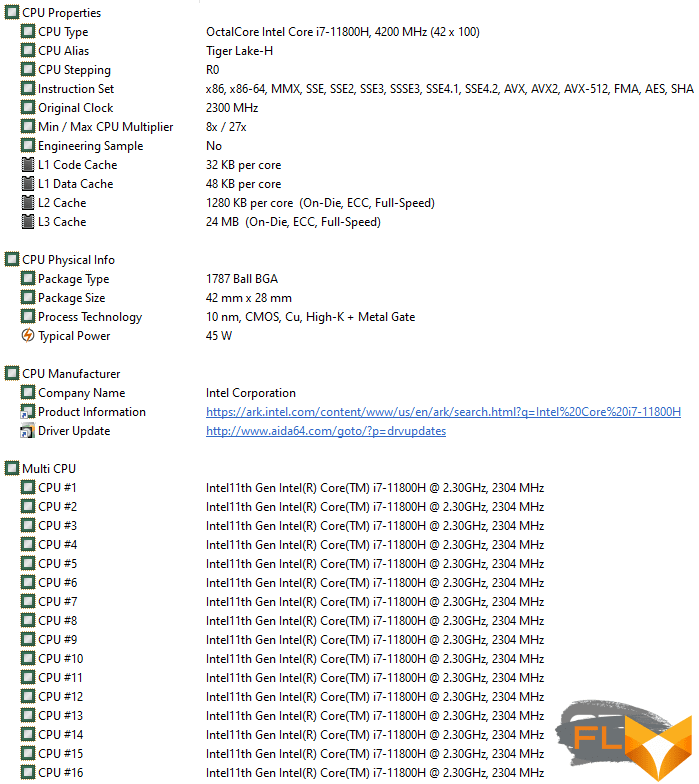
The TDP level of this processor is declared at around 45 watts, but in the process of testing the Intel Core i7-11800H easily exceeded this value, albeit for a short time.
The amount of DDR4 RAM in Thunderobot 911 Plus can be 16 or 32 GB. In our version of the laptop, two SO-DIMM DDR4 modules with a capacity of 8 GB each are installed, that is, the total volume is 16 GB.
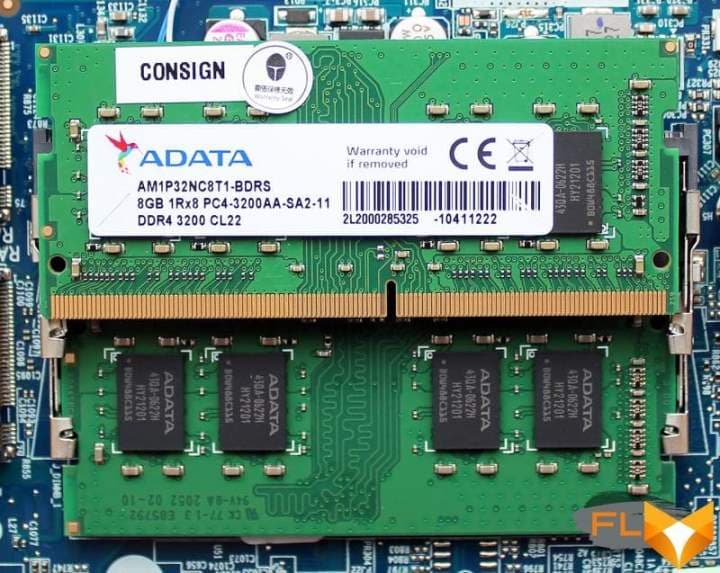
The modules are manufactured by ADATA (marking AM1P32NC8T1-BDRS). Their effective frequency is 3.2 GHz with 22-22-22-52 CR1 timings (faster than the Zero with its 2.67 GHz).
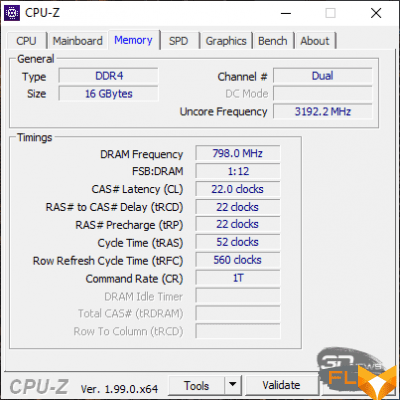 | 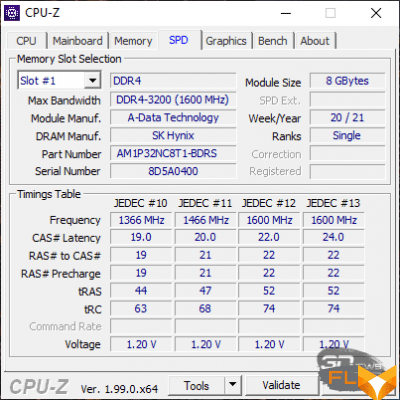 |

And yet, by modern standards, such RAM does not shine with high-speed characteristics, which is clearly demonstrated by the AIDA64 Extreme test.
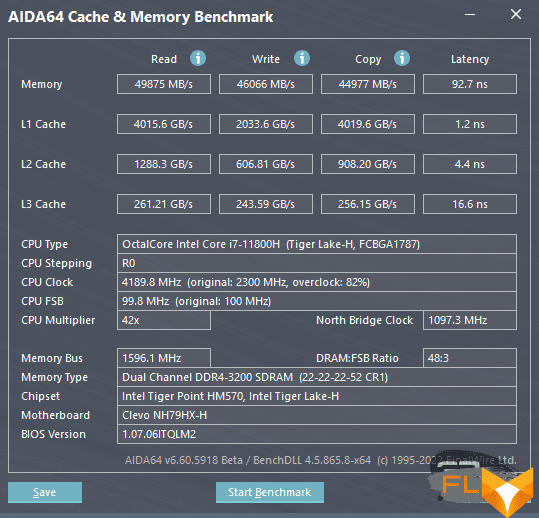
When the laptop is running in 2D modes, it switches to the Intel UHD graphics core built into the processor, and in games and 3D tests, the discrete NVIDIA GeForce RTX 3060 Laptop GPU with 6 GB of GDDR6 memory is activated.
 | 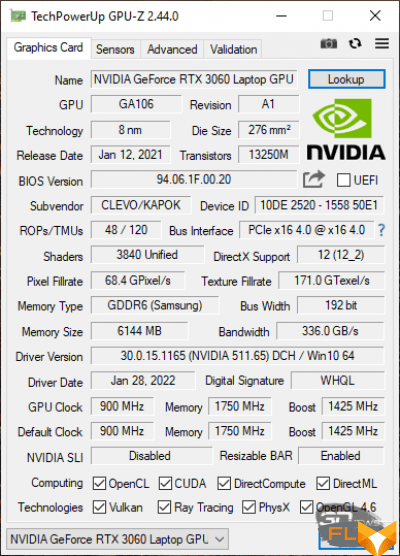 |
The thermal package of a discrete video card is limited to 105 watts – we got this value during testing. Well, to compare the performance of the two graphics cores of the laptop, the GPGPU and AIDA64 Extreme test will help.

Like the Thunderobot Zero, the 911 Plus can have 512 GB or 1 TB of storage. The last option is our case, and in general, it’s pointless to take a smaller SSD for a gaming laptop. The NVMe drive model Intel SSDPEKNW010T8 M.2 2280 format with PCIe 3.0 interface is installed here.
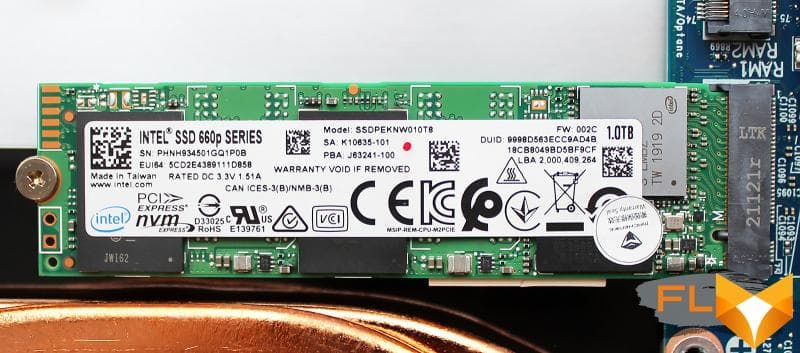
This SSD belongs to the 2018 model range and does not shine with the declared characteristics: sequential write and read should be 1800 Mbps, and endurance should be 200 TBW. Here’s what the Crystal Disk Info utility knows about it.

Performance tests of the Thunderobot 911 Plus drive confirmed its modest specifications, but it’s nice to note that when switching the laptop to battery power, the speed performance of the SSD does not decrease. The test results are shown below in the screenshots.
| ATTO Disk Benchmark (plugged in) | ATTO Disk Benchmark (battery powered) |
| AS SSD Benchmark (plugged in) | AS SSD Benchmark (battery powered) |
| CrystalDiskMark (plugged in) | CrystalDiskMark (battery powered) |
The temperature regime of the SSD in the laptop does not give cause for alarm: in the AIDA64 Extreme stress test, it was only able to warm up to 48 degrees Celsius.
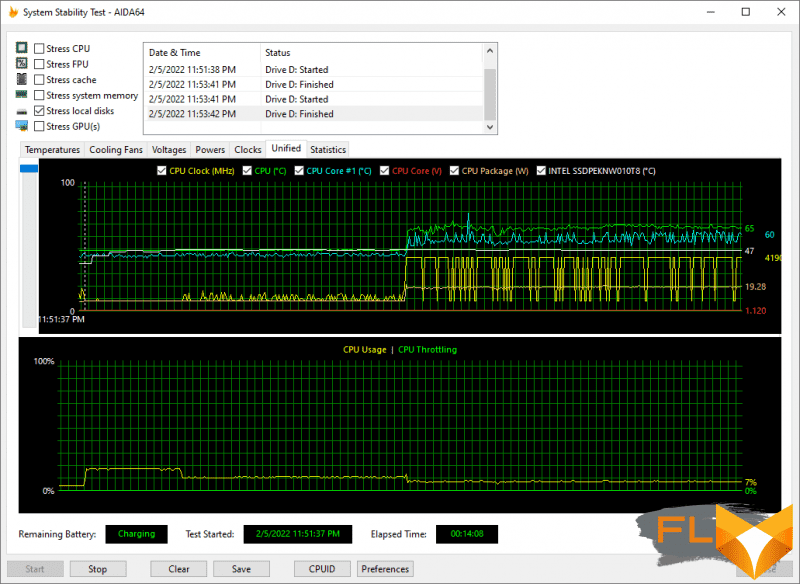
To install an additional SSD, the laptop has a second M.2 connector, and besides it there is a seat for a 2.5-inch drive, whether it’s a classic HDD or SATA SSD.
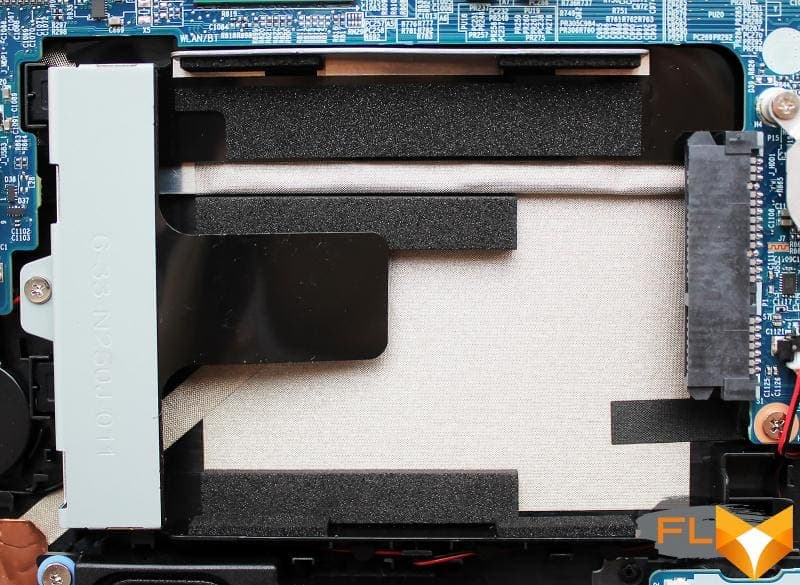
In terms of network adapters, there are practically no differences from Thunderobot Zero: the gigabit Intel I219-V is responsible for wired connections, and the Intel Wi-Fi 6 AX201NGW communication module is responsible for wireless connections.
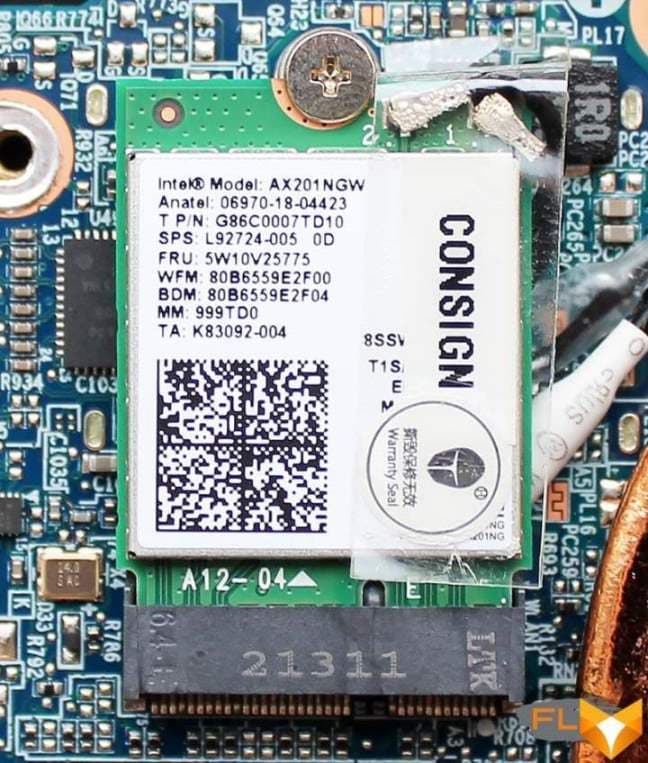
The Thunderobot 911 Plus audio system is based on the Realtek ALC256 codec, which provides signal processing and output to two small stereo speakers located at the base of the laptop case.
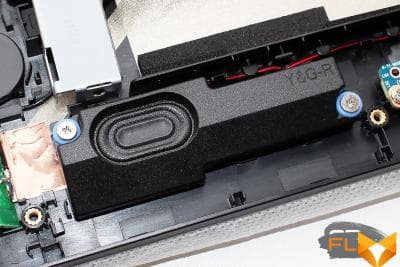 |  |
There is not much to say about the sound quality of the laptop – it is, to put it mildly, unconvincing. Not only is the detail lame (here Thunderobot is inferior to analogues), and the low frequencies are absent as a class, but the sound volume is also insufficient (taking into account the overall noise level of the laptop). However, most often such laptops are played with headphones, so these shortcomings can hardly be considered serious.
⇡#Cooling system, efficiency and noise level
The cooling system of Thunderobot 911 Plus is implemented according to the principle for gaming laptops, when cold air enters from the bottom, through the ventilation grill, and the heated air is thrown out on the sides and partially back.

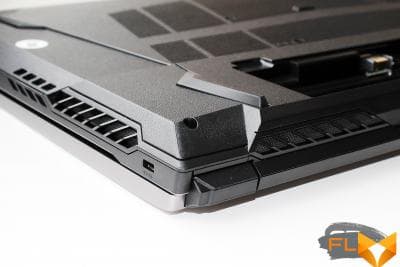 | 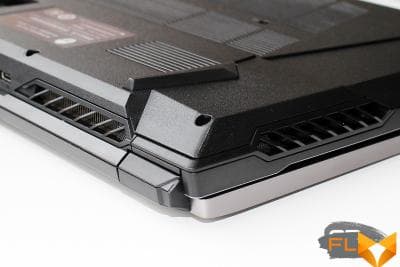 |
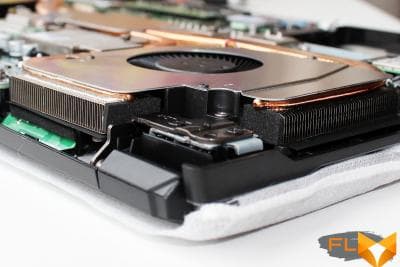 | 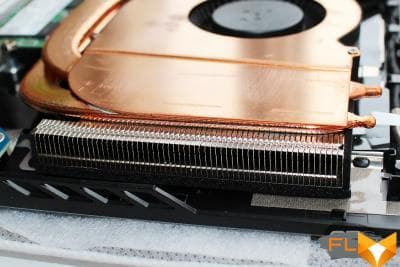 |
There are two independent circuits in the cooling system: for the central processor and for the graphics. They use different sizes of heatsinks and fans, but each has two copper heatpipes.
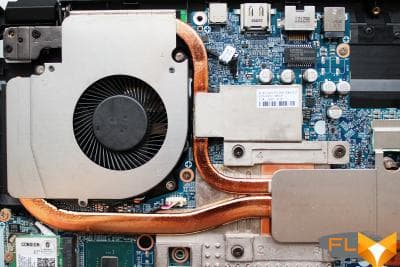 |  |
Management of the operating modes of the laptop and its cooling system is implemented in the Control Center application.
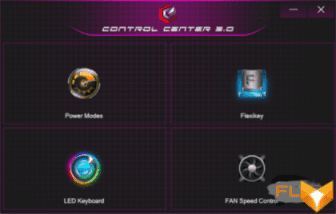
There is both a Power Modes subsection, which includes four preset operating modes, and a special subsection with fan speed control.
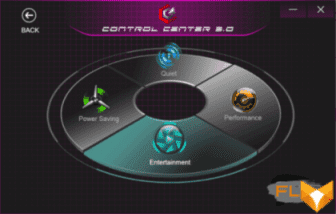
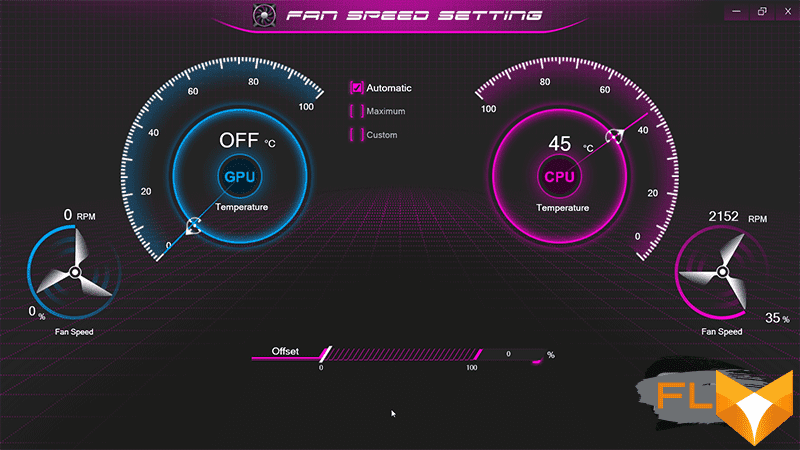
To evaluate the efficiency of CPU cooling in a laptop, we used the powerMAX stress test in AVX mode. The HWiNFO64 utility version 7.17.4680 was responsible for monitoring all indicators. Testing was conducted under the operating system Windows 10 Pro x64 with the latest available drivers and updates. The ambient temperature in the room during the tests was 24.5 degrees Celsius.
Let’s look at the results of the Thunderobot 911 Plus test in each of the four modes, noting that the parameters in the screenshot captions are given after the load has stabilized.
| Power (3.1GHz, 85°C, 60W) | Entertainment (2.7GHz, 69°C, 45W) |
| Power Save (2.3GHz, 64°C, 30W) | Quiet (1.2GHz, 49°C, 15W) |
Well, everything is obvious here. The most productive laptop mode allows the central processor to operate with heat dissipation up to 60 watts at frequencies of 3.1-3.2 GHz and a temperature after stabilization of up to 85 degrees Celsius on the hottest core – and this is with a load on all cores. There was some throttling at the beginning of the test, as well as a high level of noise. This mode is suitable for gamers with headphones, but for all other users, we would recommend switching to Entertainment. In this case, the processor frequency will be lower by 0.4 GHz at 45 W, but the CPU temperatures are kept within 70 degrees Celsius, and the noise level of the laptop is strikingly lower. The two remaining modes – Power Save and Quiet – limit the TDP of the processor within 15 watts with a corresponding decrease in frequencies and temperatures. The latter mode does not allow the processor frequency to rise above 1.2 GHz in the load, but the laptop works silently.
If Thunderobot 911 Plus is used offline, then when you activate any of the profiles in the Control Center, the result will be the same.
Battery powered (1.1-1.3GHz, 49°C, 17W)
The load frequency will not exceed 1.3 GHz, the processor temperature will be kept within 50 degrees Celsius, and the CPU heat dissipation level will be no more than 17 watts.
The same principle was used to stress test the NVIDIA GeForce RTX 3060 Laptop GPU discrete graphics card, but we loaded it with the Fire Strike Extreme looped benchmark from the 3DMark test package.
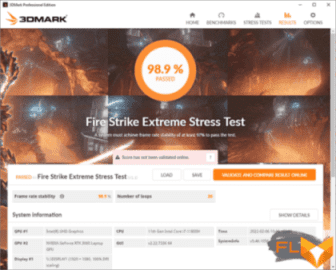
| Power (1.55GHz, 68°C, 104W) | Entertainment (1.4GHz, 63°C, 78W) |
| Power Save (0.9GHz, 60°C, 60W) | Quiet (1.1GHz, 80°C, 63W) |
At its full thermal power, the discrete graphics card in Thunderobot 911 Plus only works in Power settings mode, when its GPU can accelerate up to 1.6 GHz with a heat dissipation of 104 watts. Interestingly, the frequency of the central processor, which we also show on the monitoring graphs, in this case is 4.1 GHz at 19 watts, but in the other three operating modes it reaches 4.5 or even 4.6 GHz. However, the video card in the same Entertainment settings mode operates at 1.4 GHz at 78 W without drawdowns in the frequency of the video memory. The Power Save and Quiet modes do not apply to gaming: in the first, the video card does work at 0.9 GHz on the GPU, and in the second, only at 1.1 GHz and with a periodic reset of the video memory frequency. But both of these modes make the laptop comfortable in terms of noise level.
Trying to play Thunderobot 911 Plus on battery power is pointless, because the frequencies of the video card and processor will turn out something like this.
Battery powered (0.6-0.8GHz, 51°C, 30W)
Not only did the frequency of the graphics processor of the discrete video card drop to 0.6-0.8 GHz, but also the frequency of the video memory does not rise above 1.6 GHz. The central processor works as a pair with a graphics processor – its frequency stabilizes at a “sleepy” 0.8 GHz at a TDP of 8 watts. In general, in this mode, the laptop would be ideal for James May from The Grand Tour, also known as Captain Snail.
⇡#Performance testing
We will compare the performance of the processor and RAM of the Thunderobot 911 Plus with the performance of the components in Thunderobot Zero. Recall that both laptops are equipped with the same Intel Core i7-11800H processors, but the 911 Plus has slightly faster RAM (albeit half as much). Both laptops were tested in maximum performance mode with the power adapter connected to the mains. The results are shown in the table.
| Test name | Indicator | Thunderobot 911 Plus (Intel Core i7-11800H) | Thunderobot Zero (Intel Core i7-11800H) | |
| Announcement date and cost: | n/a ~124 thousand rubles | n/a ~148 thousand rubles | ||
| AIDA64 memtest | Read | ↑ | 49 875 | 48 851 |
| Write | ↑ | 46 066 | 44 811 | |
| Copy | ↑ | 44 977 | 43 496 | |
| Latency | ↓ | 92.7 | 78.6 | |
| WinRAR | KB/s | ↑ | 21 983 | 21 646 |
| 7-Zip | GIPS | ↑ | 78 932 | 77 064 |
| CPU-Z benchmark | CPU Single Thread | ↑ | 570 | 582 |
| Multi Thread | ↑ | 5 828 | 5 785 | |
| Geekbench 5 | Single-Core Score | ↑ | 1468 | 1589 |
| Multi-Core Score | ↑ | 9 341 | 8 896 | |
| HandBrake | H.265 MKV 4K, s | ↓ | 333,10 | 320.89 |
| CineBench R23 | CPU (Multi Core), pts | ↑ | 12 503 | 12 311 |
| CPU (Single Core), pts | ↑ | 1 398 | 1516 | |
| Blender (Classroom) | Classroom, time | ↓ | 0:07:50 | 0:10:48 |
| Corona 1.3 | Render time, s | ↓ | 0:01:50 | 0:01:51 |
| V-Ray Benchmark | vsamples | ↑ | 9 418 | 9 000 |
| VeraCrypt (Kuznyechik (Serpent(Camellia)) | Encryption, MiB/s | ↑ | 945 | 887 |
| Decryption, MiB/s | ↑ | 888 | 831 | |
| PCMark’10 | Total | ↑ | 6 693 | 7095 |
| Essentials | ↑ | 9 707 | 10 424 | |
| Productivity | ↑ | 8 610 | 8 905 | |
| Digital Content Creation | ↑ | 9 736 | 10 443 | |
| 3DMark CPU Profile | Max threads | ↑ | 7 566 | 6 878 |
| 16 threads | ↑ | 7 534 | 6 867 | |
| 8 threads | ↑ | 6 387 | 6 166 | |
| 4 threads | ↑ | 3 416 | 3 561 | |
| 2 threads | ↑ | 1724 | 1853 | |
| 1 thread | ↑ | 862 | 941 | |
| 3DMark | Night Raid | ↑ | 49 262 | 41 352 |
| Wildlife | ↑ | 42 848 | 42 939 | |
| Fire Strike | ↑ | 18 043 | 22 890 | |
| Time Spy | ↑ | 7 696 | 10 405 | |
| World of Tanks enCore RT (medium quality) | FHD, Score | ↑ | 71 256 | 76 420 |
Obviously, the performance of these laptops is almost the same, except that in some benchmarks there is a slight difference in one direction or another, but in the aggregate of tests and taking into account that laptops are tested, it can be neglected.
To evaluate the performance of the NVIDIA GeForce RTX 3060 Laptop GPU in the Thunderobot 911 Plus laptop, the table, except Thunderobot Zero with its NVIDIA GeForce RTX 3070 Laptop GPU, includes the test results of the Dell XPS 9710 laptop with a discrete NVIDIA GeForce RTX 3060 Laptop GPU. And again, each of the laptops started in maximum performance mode. All games have been tested at 1920×1080 pixels at maximum quality settings with DLSS enabled (where possible) but without any other anti-aliasing techniques. The results are shown in the next table.
| Benchmarks and games (maximum quality, Full HD) | Points/FPS | Thunderobot 911 Plus (NVIDIA GeForce RTX 3060) ~124 thousand rubles . | Thunderobot Zero (NVIDIA GeForce RTX 3070) ~148 thousand rubles. | Dell XPS 9710 (NVIDIA GeForce RTX 3060) ~250 thousand rubles . | ||||||
| 3DMark | Fire Strike Extreme | 9 100 | 12 795 | 8035 | ||||||
| Time Spy | 7 696 | 10 405 | 7096 | |||||||
| Port Royale (DLSS) | 4 322 | 6 281 | 4049 | |||||||
| Neon Noir Ray Tracing Bench | 1080P Ultra | 8 299 | 10 408 | 7 509 | ||||||
| OctaneBench 2020.1.5 | Score | 294.69 | 399.94 | 265.29 | ||||||
| V-Ray GPU RTX | Vrays | 1 130 | 1640 | 1069 | ||||||
| World of Tanks enCore RT | 1080P Ultra | 20 658 | 29 002 | 19 347 | ||||||
| F1 2018 | Average / min | 121 | / | 95 | 180 | / | 139 | 109 | / | 87 |
| Strange Brigade | Average / min | 154 | / | 100 | 199 | / | 122 | 122 | / | 52 |
| Shadow of the Tomb Raider | Average / min | 88 | / | 66 | 101 | / | 74 | 55 | / | 41 |
| Metro Exodus (Ultra) | Average / min | 59 | / | 31 | 77 | / | 39 | 53 | / | 29 |
| Metro Exodus (RTX) | Average / min | 55 | / | 28 | 65 | / | 37 | 50 | / | 27 |
| Far Cry New Dawn | Average / min | 98 | / | 74 | 100 | / | 64 | 90 | / | 57 |
| World War Z | Average / min | 151 | / | 129 | 168 | / | 132 | 115 | / | 98 |
| Chernobylite | Average / min | 106 | / | 84 | 156 | / | 118 | 97 | / | 72 |
| Gears Tactics | Average / min | 90 | / | 83 | 110 | / | 98 | 85 | / | 66 |
| Horizon Zero Dawn | Average / min | 84 | / | 46 | 91 | / | 48 | 73 | / | 40 |
| Zombie Army 4: Dead War | Average / min | 123 | / | 62 | 157 | / | 74 | 100 | / | 47 |
| Total War Saga: TROY | Average / min | 85 | / | 69 | 93 | / | 78 | 70 | / | 59 |
| F1 2020 | Average / min | 113 | / | 89 | X | |||||
| Red Dead Redemption 2 | Average / min | 60 | / | 28 | 74 | / | 33 | 41 | / | 29 |
| Serious Sam 4 | Average / min | 73 | / | 27 | 90 | / | 46 | 52 | / | 33 |
| Assassin’s Creed Valhalla | Average / min | 54 | / | 33 | 71 | / | 34 | 54 | / | 26 |
| Immortals Fenyx Rising | Average / min | 62 | / | 32 | 73 | / | 34 | 56 | / | 28 |
| Forza Horizon 5 | Average / min | 61 | / | 46 | X | X | ||||
| Serious Sam: Siberian Mayhem | Average / min | 106 | / | 36 | X | X | ||||
| Final result by games | Average / min. | 94.2 | / | 61.9 | 115.5 | / | 75.7 | 77.7 | / | 50.9 |
The loss of Thunderobot Zero is quite predictable, although the difference is not so big, but the convincing victory over the more expensive Dell XPS 9710, owners of Thunderobot 911 Plus cannot but rejoice. The reason, it seems to us, is not only the different TDP levels of the discrete NVIDIA GeForce RTX 3060 Laptop GPU – Dell has 70 watts, while Thunderobot has 105 watts – but also the more efficient cooling system of the latter, which allows the 911 Plus to keep higher the frequency of the video card under load.
⇡#Autonomous
Thunderobot 911 Plus has a removable Li-ion battery NH50BAT-4-47 with a claimed capacity of 47 Wh (3000 mAh). Its diminutiveness speaks for itself – this laptop is clearly not destined to become the king of autonomy.

Moreover, according to BatteryMon and AIDA64 Extreme, the actual battery capacity was only 45.3 Wh, which is 3.6% lower than the rating.
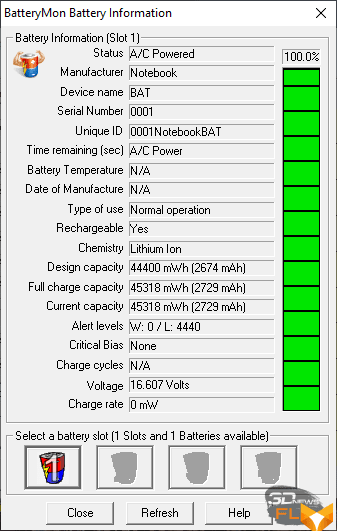
To charge the battery, the laptop comes with a Lite-On adapter with a maximum power of 180 W (19.5 V, 9.23 A) and a weight of 492 grams.
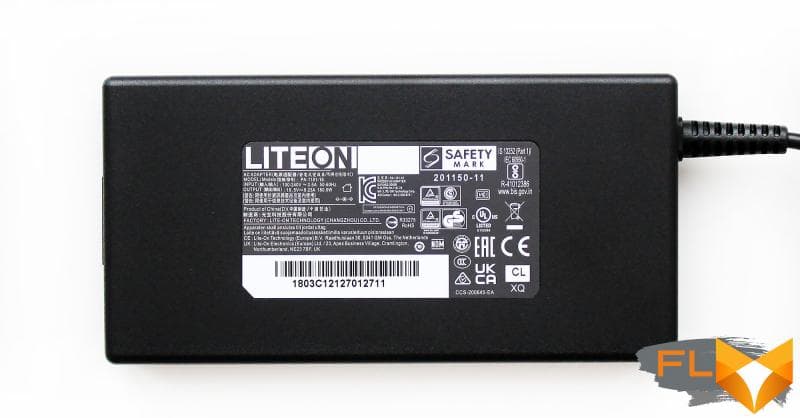
During testing, the Thunderobot 911 Plus laptop was held at least five full charge cycles, and the average time to recharge the battery from 3 to 99% was 1 hour 42 minutes. The heating of the power supply during charging or laptop operation is moderate.
The autonomy of today’s test hero was tested with the display brightness fixed at 200 cd/m2. Testing was carried out using the PCMark’10 package in four modes. Network connections and sound were not turned off, no artificial optimizations were introduced, apart from automatically switching the screen to a frequency of 60 Hz instead of 144 Hz. The results are shown in the screenshots.
| Modern Office (3 hours 58 minutes) | Applications (4 hours 07 minutes) |
| Video (3 hours 41 minutes) | Gaming (1h06) |
As you might expect, the Thunderobot 911 Plus will last about 4 hours on battery at best in normal scenarios like office work or watching videos. In the conditional game mode, you can count on 1 hour of battery life. However, with a 45 Wh battery and a very productive hardware configuration, one could hardly count on anything more.
⇡#Conclusion
The biggest strength of the Thunderobot 911 Plus is the combination of its low cost with a very good 17-inch 144Hz IPS screen, a powerful Intel Core i7-11800H processor and an NVIDIA GeForce RTX 3060 Laptop GPU (105W). At the time of the publication of this review, it was, if not impossible, then certainly extremely difficult to purchase another mobile computer with such a set within the $1,700 market. Moreover, judging by the reviews of the owners of the 911 Plus model, it could be purchased at a sale for a price of less than $ 1,400, and this is certainly not the last sale (especially now, after the appearance of new AMD and Intel mobile CPUs).
Also, the laptop can be praised for a good keyboard with a numeric keypad and customizable backlighting, two network interfaces and Thunderbolt 4, a variable set of ports, the ability to install a 2.5-inch SATA drive and a comfortable noise level without stress. The laptop is assembled with high quality, and a two-year warranty will allow its owner not to worry about possible problems during operation. Among the shortcomings, we will name the low brightness of the display, the battery of a very small capacity, non-gaming RAM and mediocre sound.
